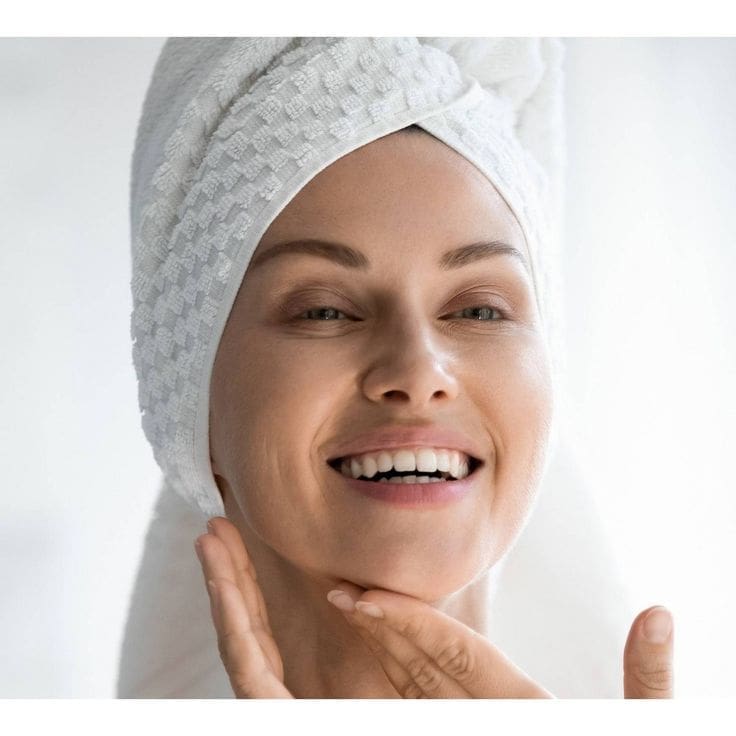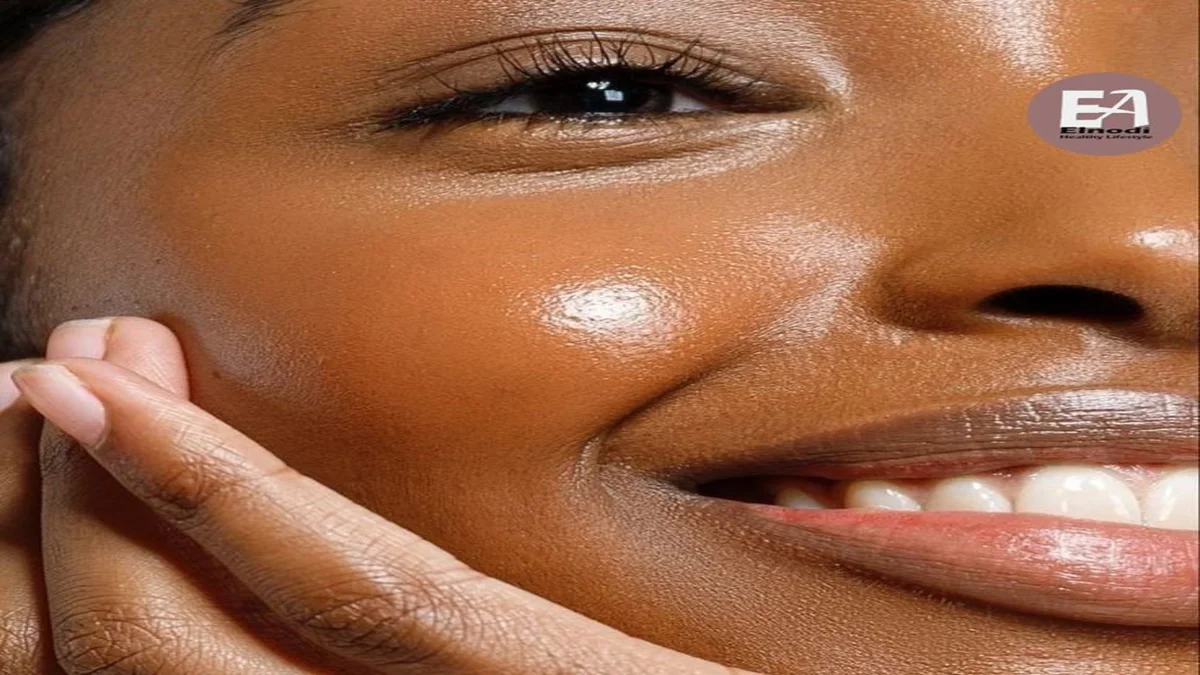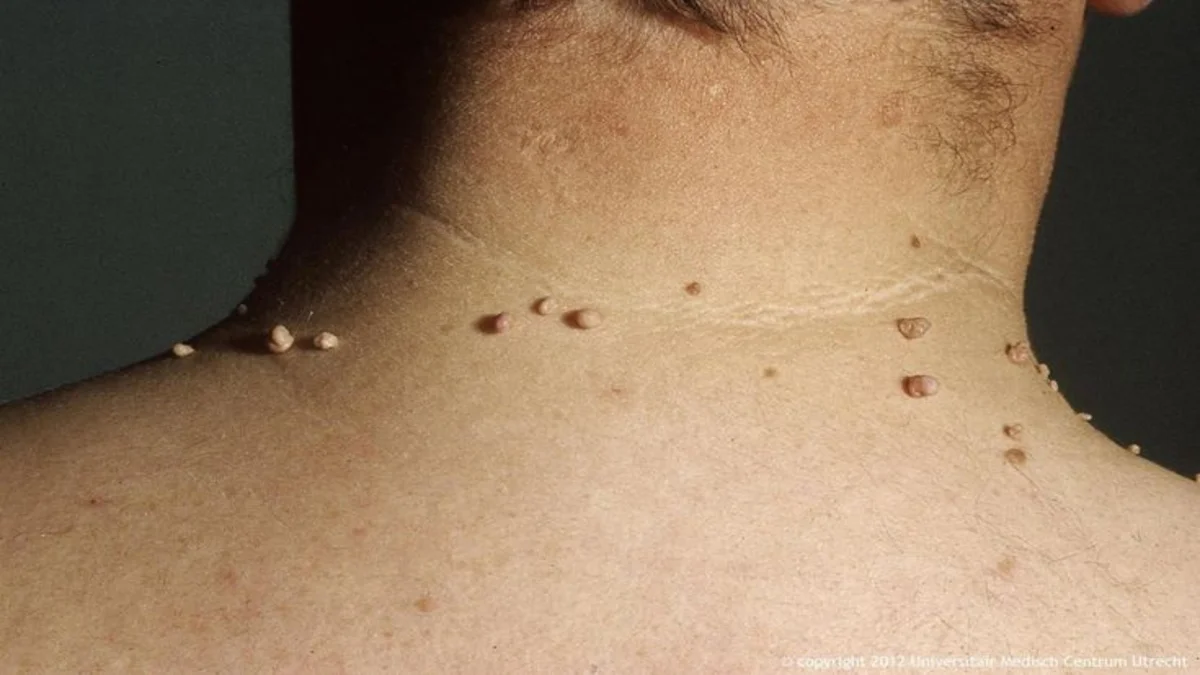Start your day with a glowing complexion by following these simple steps in your morning skincare routine. Achieve radiant skin effortlessly!
Taking care of your skin is essential for maintaining its health and appearance. A morning skincare routine sets the tone for the rest of the day, preparing your skin to face environmental stressors and helping it look its best. From cleansing to moisturizing, each step plays a crucial role in nourishing and protecting your skin.
Morning skincare: which ingredients to use?
Every person’s morning skincare routine varies, but everyone needs to apply a variety of essential ingredients.
“Rachael Gallo, esthetician and chief operating officer at Silver Mirror Facial Bar suggests beginning with just three or four products to help you establish a consistent routine.
Give it at least two weeks of trial before deciding whether the products are ineffective, as results may take time to show on your skin.
A basic morning skincare regimen includes using a cleanser, vitamin C serum, moisturizer, and sunscreen.
Afterward, you may choose to add more hydrating products or specialized treatments like toners, serums, and treatments based on your skin requirements.
Morning Skincare Routine

A morning skincare regimen readies your skin for the day by eliminating dirt and oils collected while you sleep.
It must hydrate your skin barrier and shield your skin from harmful ultraviolet (UV) rays and pollution.
Discover how you can personalize this routine according to your skin type:
Step 1: Cleanser
Wash your face to eliminate extra oil and dirt that may block pores and trigger breakouts.
Choose a mild, alcohol-free cleanser to prevent removing essential oils necessary for a healthy skin barrier.
If you have dry skin, consider using a hydrating oil-based cleanser.
In the morning, cleanse by splashing lukewarm water on your face and softly massaging a face wash with your fingertips.
Afterward, rinse your face and gently pat it dry with a towel.
Consideration for skin type: Hydrating dry skin can be aided by cleansers containing ceramides, glycerin, or hyaluronic acid.
To control excess oil and diminish acne breakouts, opt for cleansers with benzoyl peroxide, glycolic acid, salicylic acid, or tea tree oil.
Step 2: Toner
Toners, based on their components, can either moisturize the skin or eliminate excess oil and dirt.
Toning is a voluntary part of the morning routine that can be advantageous for individuals with dry or acne-prone skin.
When applying, saturate a cotton pad with toner and softly dab it on your face.
For those with oily or acne-prone skin, concentrate on the “T-zone” (forehead, nose, and chin). Alternatively, you can directly apply some toner to your face.
Consider your skin type: Hydrating toners containing hyaluronic acid or rose water are best for dry or sensitive skin.
Opt for toners with oil-absorbing components like salicylic acid or witch hazel if you have oily or acne-prone skin.
Step 3 involves using spot treatments or acne treatments.
When managing acne breakouts, apply acne treatment to specific spots or all over the face following cleansing or toning.
If your goal is to diminish dark spots (hyperpigmentation), opt for a skin-brightening treatment.
Spot treatments target localized areas and should be used when necessary.
Consideration for skin types: Utilizing benzoyl peroxide and salicylic acid in spot treatments and all-over treatments can aid in managing acne.
When aiming to diminish dark spots, opt for serums containing hydroquinone or kojic acid.
Proceed to Step 4 with the Antioxidant Serum.
Using a morning serum can enhance skin brightness, hydration, and protection.
Opt for a serum infused with antioxidants such as vitamin C, vitamin E, or niacinamide during the day to combat environmental and UV damage effectively. Remember to apply the serum by softly tapping it on your face and neck.
Considering different skin types, Vitamin C provides benefits for all skin types by brightening the skin and reducing hyperpigmentation.
In contrast, Vitamin E and hyaluronic acid serums work well in hydrating dry skin.
For those seeking an antioxidant serum for the morning to address acne and oil concerns, consider niacinamide, a variation of vitamin B3. Apart from its brightening effects on the skin, niacinamide can also minimize pores and soften wrinkles.
It’s important not to combine vitamin C with niacinamide, as this combination could reduce the effectiveness of the serums.
Step 5: Apply eye cream
Eye creams can provide extra moisture and hydration to the skin under your eyes. Apply a small amount of cream using your ring finger, gently dabbing it onto the undereye area.
Opt for daytime eye creams containing hydrating peptides, and antioxidants, such as Vitamin C, and SPF to safeguard your delicate undereye skin from the sun’s harmful effects.
Consideration of skin type: For a more refreshed appearance following a sleepless night, use an eye cream containing caffeine.
Caffeine eye creams can boost blood flow, enhancing dark circles and reducing under-eye puffiness.
Step 6: Moisturizer
Applying moisturizer on your face and neck daily keeps your skin nourished and moisturized.
Moisturizers play a vital role in boosting your skin’s hydration levels and retaining moisture.
Repairing your skin barrier, also known as the epidermis, is crucial, irrespective of your skin type.
Even individuals with oily skin must ensure their skin remains balanced with proper hydration to prevent excess oil production.
Tips for managing oily skin from the American Academy of Dermatology.
Consideration for skin type: For dry skin, moisturizers with ceramides, glycerin, or shea butter can provide hydration.
If you have oily or acne-prone skin, opt for oil-free or light gel moisturizers that do not block pores. People with oily, acne-prone skin can benefit from moisturizers containing hyaluronic acid.
Step 7: Sunscreen
Your final step in your morning skincare routine should be applying sunscreen to shield your skin from harmful UV rays.
Regularly using sunscreen can lower your chances of developing skin cancer, wrinkles, and sunspots.
When choosing a sunscreen, opt for one that provides broad-spectrum protection with an SPF of 30 or above, whether mineral-based or chemical.
It is recommended to use a nickel-sized dose of sunscreen on your face, neck, chest, and ears.
Don’t forget to reapply every 2 hours.
Morning SkinCare Routine Adherence Tips
Keep in mind, that to maintain beautiful skin as you age, consistency is key.
Below are some helpful pointers to ensure you stay committed—even on days when you oversleep or lack motivation.
Display your products prominently: Remember, what’s hidden is forgotten! According to Gallo, maintaining your morning routine involves arranging your products the night before.
Placing them on your bathroom sink will serve as a reminder to follow through.
For added organization, consider labeling them based on their usage order.
Transform Your Morning Skincare Routine into a Luxurious Ritual: Dr.
Sperling believes that viewing your morning skincare routine as a moment to unwind and rejuvenate yourself can be transformative.
Incorporating self-care practices into your routine is crucial, as it fosters a positive anticipation for indulging in acts of kindness towards oneself.
Brush off any mishaps: Even if a day or two is missed, just resume from where you stopped. Hop back on the morning skincare routine and reiterate the significance it holds in your daily life.
What’s Your Skin Type?
Identifying your skin type is essential for tailoring an effective morning and nighttime skincare regimen that caters to your skin’s specific requirements.
The primary skin types comprise normal, dry, oily, combination, and sensitive.
Below are steps to determine your skin type:
The skin maintains a harmonious balance of oil and hydration, preventing it from becoming dry or oily.
It is free from acne and does not react sensitively to products.
Dry skin occurs when the skin barrier is lacking in hydration and moisture, leading to rough, flakey, or itchy skin.
Excessive oil production by the pores leads to a shiny and greasy appearance of the skin, increasing the risk of acne due to blocked pores.
Skin is both oily and dry, with oiliness in the T-zone and dryness in the cheeks.
Skin can become easily irritated because of problems with the skin barrier, climate conditions, or certain products.
This leads to skin that is itchy and red, which may sting or burn following product application.
Summary
Implementing a skincare regimen assists in cleansing, moisturizing, and shielding your skin from external factors.
In essence, a basic morning skincare routine should consist of a mild cleanser, moisturizer, and sunscreen.
For your evening routine, focus on cleansing and hydrating.
Depending on your skin type, you can incorporate toners, serums, treatments, retinol, and oils.
If you require guidance in selecting suitable skincare products, consult with a certified dermatologist.
FAQs
What morning serums should I use?
Should I use a toner in the morning?
Toners are applied after cleansing, both morning and night. They assist in regulating the pH of the skin while also removing extra dirt, oil, makeup, and other pollutants. All skin types can benefit from incorporating a mild, moisturizing toner into their daily regimen.
Can I use water as a moisturizer?
Water alone is insufficient to keep your skin hydrated. It’s also possible that when you leave the restroom, it’ll have evaporated, along with your skin’s natural oils. The more you wash your skin without using a moisturizer or hydrator, the more probable it will get dry.
References:
- American Academy of Dermatology. Skin care tips dermatologists use.
- Mukhopadhyay P. Cleansers and their role in various dermatological disorders. Indian J Dermatol. 2011;56(1):2-6. doi:10.4103/0019-5154.77542
- American Academy of Dermatology. Face washing 101.
- Juncan AM, Moisă DG, Santini A, et al. Advantages of hyaluronic acid and its combination with other bioactive ingredients in cosmeceuticals. Molecules. 2021;26(15):4429. doi:10.3390/molecules26154429
- Bayhan GI, Gumus T, Alan B, et al. Influence of Rosa damascena hydrosol on skin flora (contact culture) after hand-rubbing. GMS Hyg Infect Control. 2020;15:Doc21. doi:10.3205/dgkh000356
- Leung AK, Barankin B, Lam JM, Leong KF, Hon KL. Dermatology: How to manage acne vulgaris. Drugs Context. 2021;10:2021-8-6. doi:10.7573/dic.2021-8-6
- Prakash C, Bhargava P, Tiwari S, Majumdar B, Bhargava RK. Skin surface pH in acne vulgaris: insights from an observational study and review of the literature. J Clin Aesthet Dermatol. 2017;10(7):33-39.
- American Academy of Dermatology. How to safely exfoliate at home
- American Academy of Dermatology. Retinoid or retinol?.
- Santoro F, Teissedre S. A novel night moisturizer enhances cutaneous barrier function in dry skin and improves dermatological outcomes in rosacea-prone skin. J Clin Aesthet Dermatol. 2018;11(12):11-17.
- Duarte I, Silveira JEPS, Hafner MFS, Toyota R, Pedroso DMM. Sensitive skin: Review of an ascending concept. A Bras Dermatol. 2017;92(4):521-525. doi:10.1590/abd1806-4841.201756111
Disclaimer: The information provided here is for educational/awareness purposes only and is not intended to be a substitute for medical treatment by a healthcare professional and should not be relied upon to diagnose or treat any medical condition. The reader should consult a registered medical practitioner to determine the appropriateness of the information before consuming any medication. Elnodi does not provide any guarantee or warranty (express or implied) regarding the accuracy, adequacy, completeness, legality, reliability, or usefulness of the information; and disclaims any liability arising thereof.






This article provides a great guide to a morning skincare routine. I’m definitely going to incorporate a vitamin C serum into my routine. Thanks for the tips!